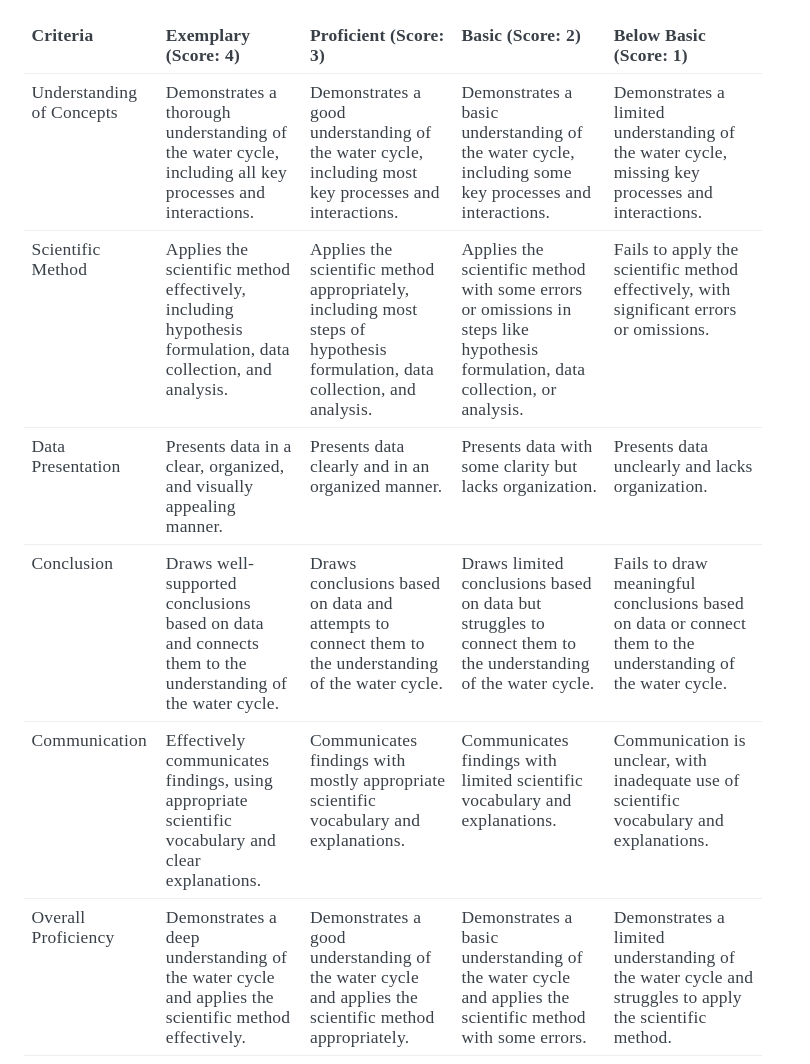Criterion and norm referenced tests
Criterion-referenced tests (CRTs) and Norm-referenced tests (NRTs) are two prominent assessment approaches, each serving unique purposes with respect to giving insights to student's academic progress.

Criterion-referenced tests (CRTs) and Norm-referenced tests (NRTs) are two prominent assessment approaches, each serving unique purposes with respect to giving insights to student's academic progress. These assessment approaches serve distinct purposes and offer unique insights into a student's performance and the overall effectiveness of educational programs. In this article, we will provide an overview of both CRTs and NRTs, explaining their fundamental differences and highlighting some considerations to take into account when employing them in your educational practices.
💡 Lessons learnt: Assessments are today's means of modifying tomorrow's teaching
Criterion-Referenced Tests (CRTs)
Criterion-referenced tests (CRTs) are assessments designed to measure a student's performance against specific learning objectives or criteria. CRTs focus on evaluating whether students have achieved predetermined educational standards. In essence, CRTs aim to answer the question: "Does the student meet the established criteria for proficiency in a particular subject or skill?" This approach is particularly valuable for assessing mastery of essential content and skills in subjects such as mathematics, reading comprehension, and science.
Characteristics of CRTs
- Objective Measurement: CRTs provide objective measurements of a student's performance against predetermined criteria or standards. The results are typically binary (pass or fail) or a criterion referenced rubric, indicating whether the student has met the criteria or not.
- Aligned with Learning Objectives: CRTs are closely aligned with specific learning objectives, ensuring that they assess what students are expected to know or be able to do.
- Content-Focused: These tests are content-focused, emphasizing the assessment of subject-specific knowledge and skills.
Example: This rubric provides clear criteria for assessing students' performance in a science experiment related to the water cycle, helping teachers evaluate their understanding, scientific method application, data presentation, conclusions, and overall proficiency in the subject. Each criterion is scored on a scale of 1 to 4, with 4 being the highest.
Elementary School Science Experiment Rubric: Understanding the Water Cycle

Norm-Referenced Tests (NRTs)
Norm-referenced tests (NRTs), on the other hand, are assessments that compare a student's performance to that of a larger group, often a representative sample of peers. The results are typically reported in percentiles, indicating where a student's performance ranks relative to others. NRTs are widely used for a variety of purposes, including college admissions tests (e.g., SAT and ACT) and large-scale assessments. They provide a valuable perspective on how an individual student compares to a norm group and can help identify areas where additional support or enrichment may be needed.
Characteristics of NRTs
- Comparison to Peers: NRTs compare a student's performance to that of their peers, providing information about how an individual's performance ranks relative to a larger group.
- Standardized Scores: NRT results are often reported in the form of standardized scores, such as percentiles or stanines. These scores help educators interpret a student's performance relative to the norming group.
- Wide Content Coverage: NRTs are designed to cover a broad range of content areas and skills, making them suitable for assessing a student's overall educational development.
The SAT (Scholastic Assessment Test) is a well-known example of an NRT used for college admissions. When considered alongside other factors like high school GPA, provide valuable information for predicting a student's likelihood of success in college.
Differences Between CRTs and NRTs
1. Purpose:
- CRTs: Designed to measure whether students have achieved specific learning objectives or standards. The focus is on mastery of content.
- NRTs: Aim to compare a student's performance to that of a norming or reference group, emphasizing relative ranking.
2. Score Interpretation:
- CRTs: Scores indicate whether a student has met predefined criteria or standards, typically presented as "pass" or "fail."
- NRTs: Scores are often reported as percentiles, stanines, or other comparative measures that show a student's rank relative to peers.
3. Content Emphasis:
- CRTs: Content is aligned with specific learning objectives, skills, or curriculum standards.
- NRTs: Content is broader and typically covers a wide range of subjects and skills.
4. Application:
- CRTs: Commonly used in educational settings to assess mastery of specific skills or knowledge.
- NRTs: Widely used for comparative purposes, such as college admissions, program evaluation, or determining relative strengths and weaknesses.
Practical Considerations for Educators
Educators must usually take several practical considerations into account when selecting between the two approaches. We explore key factors for educators to weigh when making this decision:
- Educational Goals and Objectives: Before choosing an assessment method, educators should clearly define their educational goals and objectives. CRTs are well-suited for evaluating whether students have mastered specific learning standards or curriculum objectives. If the aim is to determine how students perform relative to peers or to rank them for admissions purposes, NRTs may be more appropriate.
- Curriculum Alignment: Consider the alignment of the assessment with the curriculum. CRTs should closely match the content and skills taught in the classroom, while NRTs may cover a broader spectrum of topics. Ensuring alignment helps maintain the validity of the assessment.
- Type of Feedback Desired: Think about the type of feedback you want to provide to students. CRTs offer detailed feedback on specific areas of strength and weakness, allowing for targeted instruction. NRTs provide a comparative ranking but may not offer granular insights into individual performance.
- Use of Assessment Data: Consider how assessment data will be used. If the primary purpose is to inform instructional decisions within the classroom, CRTs are often preferred. For high-stakes decisions or external comparisons, such as college admissions, NRTs may be more suitable.
- Educational Context: The context in which the assessment will be administered is crucial. In high-stress or high-stakes environments, NRTs can induce anxiety and pressure. In contrast, CRTs, with a focus on mastery, can be less stressful for students.
- Balance Between Formative and Summative Assessment: Consider the balance between formative (ongoing) and summative (final) assessments. CRTs can serve as effective formative assessments to inform instruction throughout the school year, while NRTs are typically used for summative purposes.

Adiutor
Adiutor means "helper" - we do just that, by taking a load of your school administration and helping you focus on what matters most: the kids.
References:
Brown, P. J., & Smith, R. L. (2019). Criterion-Referenced Measurement: The State of the Art. Springer.
Priscilla P, Brenda Y, Happy G. (2020). Using a criterion-referenced rubric to enhance student learning: a case study in a critical thinking and writing module https://doi.org/10.1080/07294360.2020.1795811
Pellegrino, J. W., Chudowsky, N., & Glaser, R. (2001). Knowing What Students Know: The Science and Design of Educational Assessment. National Academies Press.
Popham, W. J. (1971). Criterion-referenced measurement: An introduction.
Stiggins, R. J., & Chappuis, J. (2012). An Introduction to Student-Involved Assessment FOR Learning (7th ed.). Pearson.
Wiggins, G. P., & McTighe, J. (2005). Understanding by Design. Association for Supervision and Curriculum Development.
Kuncel, N. R., Hezlett, S. A., & Ones, D. S. (2001). A Comprehensive Meta-Analysis of the Predictive Validity of the Graduate Record Examinations: Implications for Graduate Student Selection and Performance. Psychological Bulletin, 127(1), 162-181.
College Board. (2020). Understanding Validity Evidence for the SAT. College Board Research & Development.
